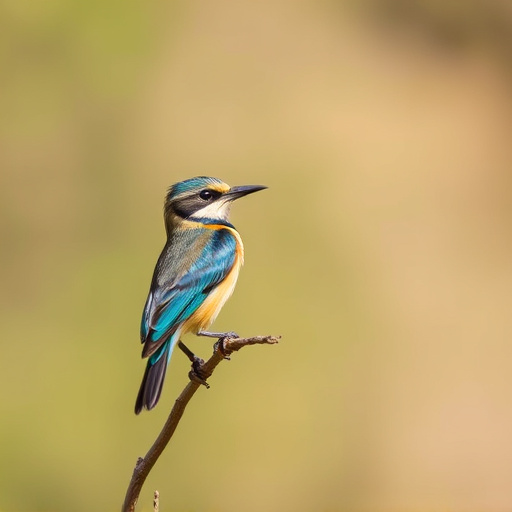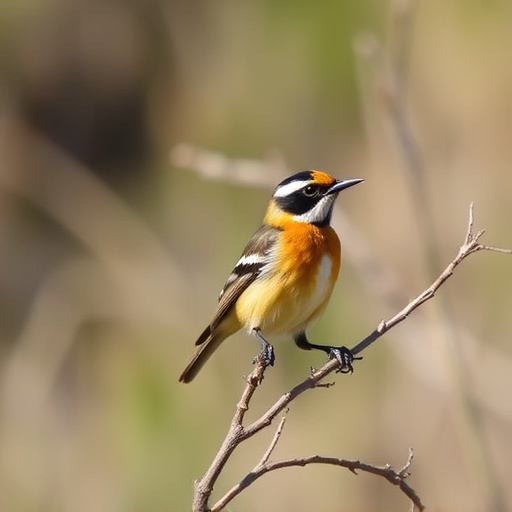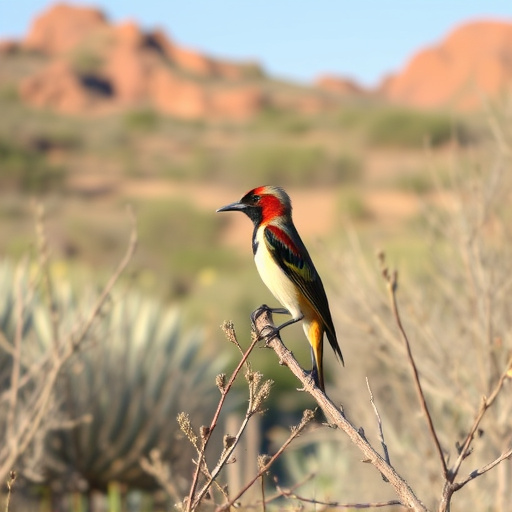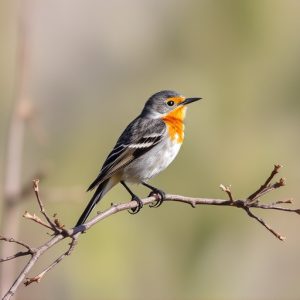The Masked Bobwhite quail, a sought-after sight for birders in southern Arizona, is struggling due to habitat loss. The Buenos Aires National Wildlife Refuge stands as a beacon of hope, successfully restoring the bird's habitat and attracting birding enthusiasts. Southern Arizona is a prime birding destination with 450 species, including rare birds from Mexico. With innovative restoration strategies, the refuge fights against population decline, offering guided tours that educate and support conservation efforts. Visitors can contribute to this cause by participating in sustainable activities and supporting local organizations dedicated to preserving southern Arizona's unique avian landscapes for birding enthusiasts.
“Discover the vibrant world of the Masked Bobwhite, a unique bird species native to Southern Arizona. This article explores the vital role played by Buenos Aires Refuge in restoring their habitat. With an emphasis on birding in this captivating region, we delve into the current state of Masked Bobwhite populations and the challenges they face. Learn about successful restoration strategies implemented at the refuge and how visitors can contribute to these conservation efforts, making a direct impact on the future of this enchanting species.”
- Understanding the Masked Bobwhite: A Unique Species in Southern Arizona
- The Significance of Buenos Aires Refuge for Habitat Restoration
- Birding in Southern Arizona: Unveiling the Appeal of the Region
- The Current State of Masked Bobwhite Populations and Their Challenges
- Restoring Habitats: Strategies and Success Stories at Buenos Aires Refuge
- How Visitors Can Contribute to the Conservation Effort
Understanding the Masked Bobwhite: A Unique Species in Southern Arizona

The Masked Bobwhite (Colinus virginianus), also known as the Mexican Bobwhite, is a unique species that has made Southern Arizona its home. This small, ground-dwelling bird is part of the quail family and is renowned for its distinctive calls, which often echo through the region’s diverse landscapes. Birding enthusiasts in southern Arizona find the Masked Bobwhite to be a highlight, adding a special allure to their outdoor adventures.
These birds inhabit various environments, from dense scrublands to open grasslands, preferring areas with plenty of cover and food sources. Unfortunately, their populations have been declining due to habitat loss and fragmentation. Restoring and protecting these habitats is crucial for the survival of the Masked Bobwhite, ensuring that birding in southern Arizona remains a rewarding experience for both locals and visitors alike.
The Significance of Buenos Aires Refuge for Habitat Restoration

Buenos Aires Refuge, spanning vast areas in southern Arizona, plays a pivotal role in habitat restoration for the Masked Bobwhite, a species that has faced significant challenges in recent years. The refuge’s diverse ecosystem provides crucial breeding and feeding grounds, enabling populations of this quail to thrive once more. With its rich vegetation and water bodies, it offers a safe haven where these birds can flourish, contributing to the overall health of the region’s biodiversity.
For avid birders exploring southern Arizona, Buenos Aires Refuge presents an unparalleled opportunity to witness the Masked Bobwhite in their natural habitat. The refuge’s commitment to ecological preservation ensures that birding enthusiasts can enjoy a diverse range of avian species, making it a top destination for those passionate about nature and wildlife conservation.
Birding in Southern Arizona: Unveiling the Appeal of the Region

Southern Arizona is a haven for birders, offering a diverse range of ecosystems and habitats that attract feathered friends from near and far. The region’s unique geography, with its towering mountains, vast deserts, and lush river valleys, provides a home to over 450 species of birds, making it a true paradise for those who love to observe these winged wonders. Birding in southern Arizona offers an unparalleled experience, allowing enthusiasts to witness rare and exotic species alongside more common residents.
The area’s popularity among birders is no coincidence; it boasts several key attractions. The presence of the Masked Bobwhite, a ground-dwelling bird native to the region, is a significant draw. Its distinctive calls and elusive nature make it a challenge for even the most experienced birders. Additionally, southern Arizona’s proximity to Mexico facilitates migration patterns, ensuring that birdwatchers can enjoy a diverse array of species throughout the year. The region’s natural beauty and abundant wildlife make it an ideal destination for anyone seeking to immerse themselves in the rich birdlife of the American Southwest.
The Current State of Masked Bobwhite Populations and Their Challenges

The masked bobwhite (Colinus virginianus), once a common sight across southern Arizona’s diverse landscapes, has experienced a significant decline in recent years. This small, ground-dwelling bird is renowned among birders for its distinctive calls and elusive nature. However, habitat loss and fragmentation have taken a toll on their populations, pushing them towards extinction in certain areas. The lush, open grasslands that once provided abundant food and shelter have been replaced by urban expansion, agricultural intensification, and invasive species, creating a challenging environment for the masked bobwhite’s survival.
Southern Arizona, known for its vibrant birding opportunities, is no exception to this crisis. The region’s unique ecosystems, which include vast deserts and picturesque grasslands, have witnessed a drastic transformation due to human activities. As a result, many bird species, including the masked bobwhite, struggle to find suitable habitats capable of sustaining their numbers. Restoring these critical habitats is essential to ensure the long-term viability of the masked bobwhite in southern Arizona, making it a priority for conservation efforts and birding enthusiasts alike.
Restoring Habitats: Strategies and Success Stories at Buenos Aires Refuge

At Buenos Aires National Wildlife Refuge, habitat restoration efforts have been a game-changer for the Masked Bobwhite—a species that once faced significant decline in southern Arizona due to habitat loss and fragmentation. The refuge’s strategies focus on reestablishing native plant communities and improving wildlife corridors. By removing invasive species and reintroducing native vegetation, the refuge is transforming the landscape. This approach not only benefits the Masked Bobwhite but also enhances overall biodiversity, creating a thriving ecosystem for various bird species, including those sought after by birding enthusiasts in southern Arizona.
The success of these restoration projects is evident in the increase in suitable habitat and the subsequent rise in bird populations. The refuge’s efforts have fostered a vibrant environment, encouraging birds to breed and thrive. This transformation has not only restored the natural balance but also enriched the birding experience for visitors, offering opportunities to observe diverse avian life in their natural habitats.
How Visitors Can Contribute to the Conservation Effort

Visitors play a crucial role in supporting the conservation efforts at Buenos Aires Refuge. One way to contribute is by participating in guided birding tours, where they can observe and record various bird species, including the masked bobwhite—a key focus of the refuge’s restoration project. These tours not only educate participants about the local ecosystem but also provide valuable data for researchers tracking bird populations.
Additionally, visitors can lend a hand through sustainable practices like staying on designated trails to minimize habitat disruption and respecting wildlife. Supporting nearby conservation organizations and purchasing merchandise from ethical vendors dedicated to preserving southern Arizona’s birding hotspots is another way to make a difference. Every action, big or small, contributes to the overall goal of restoring and protecting these vital habitats for future generations of birdwatchers and nature enthusiasts.
Buenos Aires Refuge plays a pivotal role in restoring habitats for the Masked Bobwhite, enhancing birding opportunities in southern Arizona. By implementing successful restoration strategies, the refuge not only conserves this unique species but also enriches the region’s natural tapestry. Visitors can contribute to this effort by participating in conservation activities and spreading awareness, ensuring that the Masked Bobwhite continues to thrive amidst the hustle and bustle of the local landscape.
